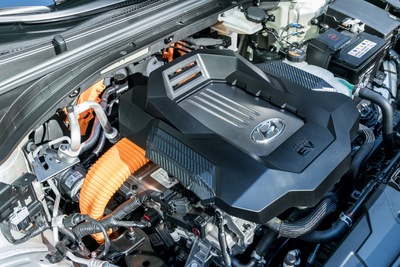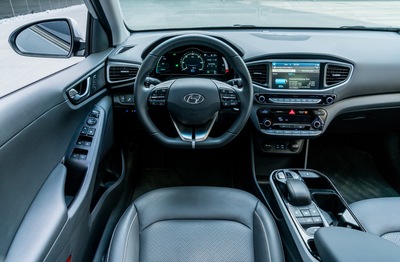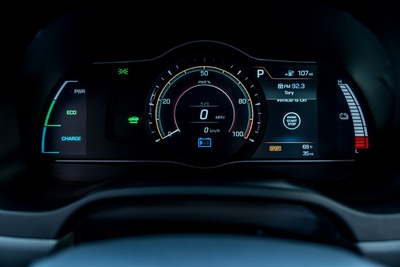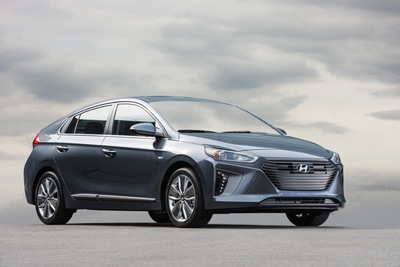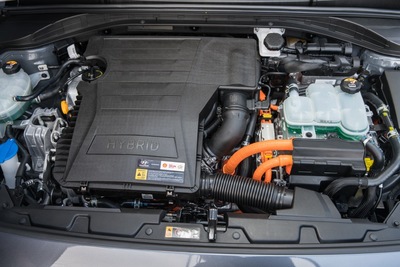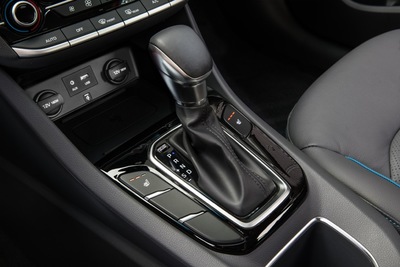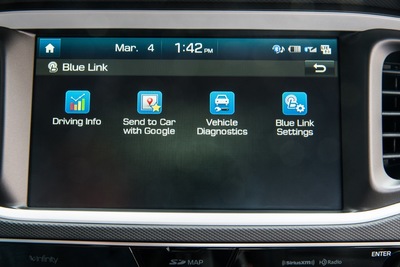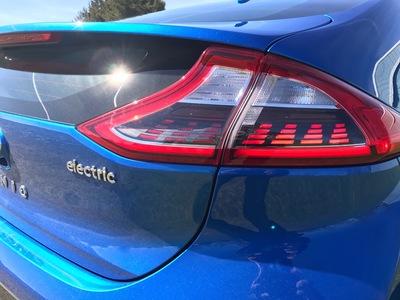2017 Hyundai Ioniq and Hybrid Review By Thom Cannell
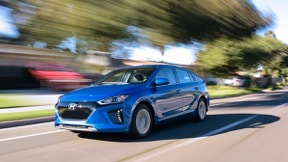 |
By Thom Cannell
Senior Editor
Michigan Bureau
The Auto Channel
Are you a Millennial? If so, Hyundai has three Ioniq-branded, technologically advanced electrified vehicles designed for an age category predicted to be primary buyers in 2020. That’s just two and a half years from today.
As our population migrates to urban areas, concerns over clean air and gridlock are driving changes in what’s called mobility, instead of simply cars and trucks. Currently over 80% of Americans live in cities and by 2050 that number jumps to 90%. Electrified vehicles become very important in this scenario. Typically smaller, these vehicles fit into smaller spaces, emit fewer exhaust gasses, and can be larger on the inside than conventional vehicles as the engine compartment shrinks through electrification and downsized engines.
Regardless your position on climate change, it’s common sense that the less we consume fossil fuels for transportation the better; there seems to be a finite supply. This implies a future of electric cars like the Hyundai Ioniq sub-brand as we find more and better ways to produce renewable energy.
Hyundai’s Ioniq trio—Electric, Hybrid and Plug-in Hybrid—debuted Europe where several cities impose a daily fee for any non-ZEV (Zero Emissions Vehicle). Ioniq are modest sized cars with modern features like LED lighting and an aerodynamic profile that’s as good as is available. The Ioniq Electric has no grille; there’s no need for cooling air flowing into the engine compartment. It has a full suite of LED headlamps, tail lamps, and daylight running lights (DRL) to conserve battery power. Its range is approximately 124 miles. Chevrolet’s new Bolt offers over twice that range but costs about $7,000 more. We recently tested Ioniq Electric and Hybrid, both available in showrooms now.
Hyundai uses EPA’s fueleconomy.gov charts to show that Ioniq Electric and its 136 MPGe beats everyone: BMW i3, Chevrolet Bolt, Volkswagen eGolf, and others. Ioniq Blue Hybrid is the most fuel efficient car in North America at 58 MPG, more efficient than hybrid competitors like Prius Eco, Prius, Niro FE and others. A fun chart from the same source shows Ioniq Electric costs $0.81 to drive 25 miles, a Bolt $0.92. Similarly the Ioniq Hybrid costs $1.00 for 25 miles, a Prius Eco $1.04, and an average new car $2.24 for similar distance.
Sliding in to the Ioniq Electric we appreciated its clean, minimalist interior with many surfaces made from eco-friendly materials derived from sugar cane, powdered wood, or volcanic stone. We liked the piano-key controls for heating and cooling, and telematics. The premium audio system, equipped with Infinity Clari-Fi, improved low-value MP3s and satellite sources. It delivers everything but window-rattling sub-bass. Ioniq’s LCD instrument panel—oh, it’s no longer an instrument panel, it’s an “information screen”, was easily read and had so many interesting facets it could have been distracting.
Everything felt and seemed familiar from the driver’s seat except that the paddle “shifters” controlled four levels of regenerative braking. Exploring those as we drove by letting off the throttle, position “0” felt like coasting in high gear. Three felt like a solid medium brake application that got stronger as the car slowed; there wasn’t a reason to apply the brakes except to hold position! Two felt like letting off the throttle while in second gear and One we barely noticed. This is fun to play with and fully customizable if you go deep into vehicle settings.
What we immediately felt was how solid Ioniq was, how muted road noises were. Hyundai uses an aluminum hood and rear deck lid to lower weight and center of gravity for improved ride and handling. It also uses a body mostly constructed of Advanced High Strength Steel (AHSS) bonded together with structural adhesives. The result is race-car rigidity, and enhanced quietness.
Driving the Ioniq Electric felt like a normal sedan. We’re used to engine noises and the Electric had very close to none. That lack of noise really accented interior stillness. Handling was very pleasant due to a typical McPherson front strut suspension with torsion beam rear suspension.
On the road we explored the three driver-selectable power modes, Normal “for balanced performance”, Eco for energy saving, and the more dynamic Sport. None turned the Ioniq into a Tesla S as there’s only 118 horsepower (88 kW) from its 28 kWh battery. That said, the 215 pounds-feet of torque firmly delivered satisfactory acceleration. We chose either Normal or Sport for our drive; Eco delivered slower acceleration on the two-lane roads we were driving.
Our overall impression was of a “standard” four door sedan with plenty of room for four, a roomy trunk, and surprising rigidity and stillness. Our only displeasure is with styling at the rear where a split rear window often complicates rear views. Our drive was short, there was no fear of running the battery down, a primary concern for drivers of any electric car. Had we needed to add electrons to our tank an app on the information system showed us a screen filled with nearby charge stations. Hyundai provides an on-board charger capable of filling the “tank” to 99 miles or 80% in 23 minutes using a 100 kW charging station. It takes about 30 minutes with a 50 kW charger.
After a pause for lunch we drove the hybrid version.
My driving partner, Christian, idled up and there it was, engine noise instead of stealth.
Ioniq Hybrid pairs a 104 horsepower 1.6L GDI (gasoline direct injected) engine with a 43 HP e-motor. After the BEV it sounded positively industrial. This car, which is identical except for an air-admitting grille in front, flows its power through a Hyundai-designed DCT or dual clutch transmission engineered specifically for hybrids. This offers automatic shifting or your ability to control gears and avoids the “rubber band” feel of most CVTs. The Hybrid even provides a reasonable fun-to-drive feeling. Why only reasonably? Total horsepower is modest at 139 and the tires, Low Rolling Resistance tires specifically engineered for Ioniq by Michelin, are not the ultra-grippy tires we personally prefer cornering fast in the hinterland.
While we’re not a fan of LRR tires in general, Michelin Energy Saver All Season tires maximize economy for owners. Hyundai and Michelin say they’re similar to standard all-weather tires in wet and snow grip, which has been our most frequent concern. What we do know after talking to Michelin and Hyundai representatives is LRR tires can offer over 5% (perhaps as much as 7%) improved fuel economy over high performance tires. That’s a few hundred dollars per year in fuel savings for your family.
Ioniq Hybrid offers plenty of advanced features to go along with its hybrid power train. For instance there is no 12 Volt battery for engine start or accessories. Instead, part of the lithium-ion battery pack under the rear passenger seat delivers 12 V. If it should deplete, there’s a reset button to fill it up from the main battery. Call it a self jump-start function. The main battery has a capacity of 1.56 kWh, a bit more than 2016 Toyota Prius or Ford C-Max hybrids. Across the sleek front, shutters behind the grille open and close in three stages depending on engine needs. This lowers drag.
Most interesting is the ability of the Hybrid (and 2018 plug-in hybrid) to use predictive energy management to analyze your typical driving route using 3-D mapping and predict energy requirements, then suggest when to coast and save energy.
If you’re like us, you care equally about how the powertrain delivers its driving experience. Like its sibling, the Hybrid is exceptionally solid and quiet. Like other Hyundai hybrid models it offers three driving modes, Eco, Sport (which means the gas engine operates at all times) with the e-motor enhancing performance, and Manual shift. We tried them all and had fun with the manual shift mode on twisting roads where it could be throttle steered, to our surprise. When we shifted into Sport and Manual there was appreciable change in steering effort and an unmistakable color change in the instrument panel.
All Ioniq provide a full suite of advanced features like Automatic Emergency Braking with Pedestrian Warning that starts at key-on and will brake to a full stop between 5 and 43 MPH. It, AEB, does turn off when you discontinue electronic stability control, corner suddenly or sharply, or floor the accelerator.
Blind Spot Detection with Cross Traffic alert (we love cross traffic alert), Lane Departure Warning, rearview camera, and Smart Cruise control are available as well. Infinity Premium Audio with Clari-Fi is an option you want to order, and automatic temperature control, driver-only A/C, second row vents and heated front seats are standard or an option, as are an 8” touch screen with navigation; a 7” audio touch screen is standard. Cool features like Qi mobile phone charging may be optioned.
Hyundai does a good job with telematics. There’s Bluetooth, SiriusXM satellite radio and both Android Auto and Apple CarPlay. Navigation downloads, delivered by HD radio, are free. BlueLink consists of Connected Care (collision, SOS, vehicle health, app, etc.) which for Ioniq owners is provided for the first three years, as is their suite of Blue Link convenience features including the Remote Group (doors, horn, start, find, curfew, geo-fence, etc.) and Guidance Package that relies on Google searches. If you buy the Ioniq Electric, or later the Plug-in Hybrid, you can schedule off-peak charging at home, and connect via Amazon’s Alexa or Google Home. The Electric allows some of its features to be controlled by wearables like Apple Watch. Today the Ioniq Electric is on showrooms in California. Soon Cali dealers will offer a 36 month subscription pricing model the covers unlimited mileage, charging cost reimbursement, and free maintenance rolled into the lease payment. There’s no price yet available. If you’re elsewhere any Hyundai dealer can order an Ioniq Electric for you.
We talked about the differences and similarities throughout our day-long trip, Christian and I. Top of list were how quiet and solid both cars felt. The Hybrid offered a more “car-like” ability to shift gears, set driving modes, and felt more familiar. We also liked the infinite range provided by the gas engine. But at the end of the day the Ioniq Electric won us over for the same quiet-solid-swift reasons. Christian had just driven Bolt and called it amazing, with great telematics that go beyond Ioniq—at a $7,000 up-charge. Neither of us felt cheated by the lesser range of 124 miles, neither of us felt the Ioniq lacked an emotional connection with the driver. And who wouldn’t love telling friends they were touching wood fiber, sugar cane, and volcanic rocks while listening to a gratifying sound system in your new, eco-friendly car.
Copyright 2017 by Thom Cannell
First NA Serial Rights Granted; All Other Rights Reserved
Cannell & Associates
517 Randolph Street
Mason, MI 48854
517-371-2058 Mobile 517-896-3098
mailto:Thom@CannellAndAssociates.com
4/7/17
The Most In-Depth Independent Hyundai Buyer's Research - Anywhere!
- Ready To Buy? Save Hundreds As An Unencumbered Free-to-the-Dealer Independent Buyer
- Hyundai Buyers Guide | Specs, Prices, Expert Reviews and Comparisons 2017-1997
- Find Your Perfect New Car Match
- Hyundai Reviews From The Auto Channel (1993-Present)
- The Auto Channel's Hyundai Brand Archives; News, Press Releases, Reviews, Specifications, Prices, Video, Images (46,998 Annotations)



